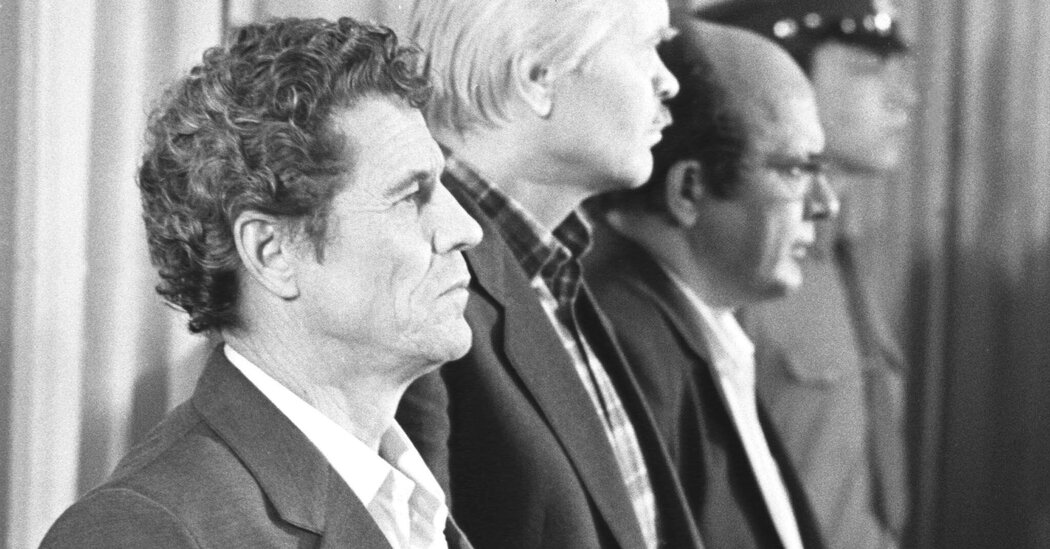Viktor Bryukhanov, who helped build and manage the Chernobyl nuclear power plant in Ukraine, where a reactor explosion in 1986 released a radioactive dust cloud over Europe and a humbling fog of finger-pointing and political fallout that contributed to the collapse of the Soviet Union, died on Oct. 13 in Kyiv. He was 85.
His death was announced by a spokesman for the now-closed power plant. After serving five years in prison, Mr. Bryukhanov returned to government service in Ukraine to head the technical department in its Economic Development and Trade Ministry.
He had been treated for Parkinson’s disease and had sustained several strokes since he retired in 2015.
But Mr. Bryukhanov disclaimed criminal liability. He attributed the explosion to original design flaws that had been dictated by Moscow, a failure of higher-ups to proe adequate equipment to measure radiation leaks, and bureaucratic red tape that died responsibility between technocrats and Communist Party apparatchiks.
Nonetheless he was singled out as the chief fall guy, convicted of gross violations of safety regulations and expelled from the party. Sent to a labor camp, he served half his 10-year sentence, and was released after the Soviet Union collapsed in 1991.
Investigations concluded that faulty protocols in the plant’s design and poorly trained personnel had caused the steam explosion and fires that erupted in the early hours of April 26, 1986, during a flawed safety experiment at the last of the installation’s four reactors.
The explosion smashed the reactor’s steel and concrete roof and spewed tons of radioactive rubble half a mile into the air.
Two workers died immediately, and 28 more fatalities, from radiation poisoning, were recorded within a few weeks. Even though some 350,000 people living in the area were evacuated, scientists estimated that an additional 5,000 thyroid cancers could be attributed to radiation exposure from the accident.
“My father came home after 24 hours, and it looked like he had aged 15 years,” Mr. Bryukhanov’s son, Oleg, said in an interview for a 2020 Flemish TV series, “Under the Spell of Chernobyl.”
Wind spread radioactivity as far west as Italy and France, contaminating millions of acres of European farmland and forest and producing deformities in newly-born livestock. After the accident, the reactor core was enclosed in a concrete and steel sarcophagus, but even that proved to be structurally insufficient, and officials declared a 1,600-square-mile zone surrounding the plant to be uninhabitable indefinitely.
“You need to understand the real causes of the disaster in order to know in what direction you should develop alternative sources of energy,” Mr. Bryukhanov told the Russian magazine Profil in 2006. “In this sense, Chernobyl has not taught anything to anyone.”
He contended that he and several other plant officials had been scapegoated as a result of “a tissue of lies that distracted us from the search for the real causes of the accident.”
Viktor Petrovich Bryukhanov was born on Dec. 1, 1935, in Tashkent, Uzbekistan, which at the time was a Soviet republic. His father was a glazier, his mother a housekeeper.
After graduating from Tashkent Poly Technical Institute (now Tashkent State Technical University) with a degree in electrical engineering in 1959, he worked at the Angren Power Station in Tashkent, starting out as mechanical installer.
He and his wife, Valentina, a former electrical engineer at Chernobyl, had lived in Kyiv since 1992. In addition to Oleg, a computer mechanic, they had another child, Lily, who is a pediatrician. Complete information on survivors was not available.
As the Chernobyl plant’s construction manager, Mr. Bryukhanov had recommended the installation of what were known as pressurized water reactors, which were widely used around the world. But he was overruled in favor of a different type unique to the Soviet Union: four Soviet-designed, water-cooled RBMK reactors, which were nestled end to end in an enormous building.
“Among others, scientists, engineers and managers in the Soviet nuclear-power industry had pretended for years that a loss-of-coolant accident was unlikely to the point of impossibility in an RBMK,” the historian Richard Rhodes wrote in “Arsenals of Folly” (2007), his book about the nuclear arms race. “They knew better.”
Chernobyl’s first reactor went online in 1977. After a leak was fixed in 1982, all four reactors were operating by 1984.
In its report on the accident, the Soviet Politburo extended blame to government inspectors as well.
Mr. Rhodes wrote that Mr. Bryukhanov had been promoted to run Chernobyl despite an earlier accident involving a steam-valve leak at another plant with which he was involved.
“Now in the night someone called Bryukhanov from the power plant to tell him that ‘something awful has happened — some sort of explosion,’” Mr. Rhodes wrote. “He rushed to the scene thinking he would have to deal with another steam-valve rupture, but when he saw Number Four ruined and smoking, fires burning on the roof, fire trucks everywhere, he said later, ‘my heart stood still.’
“He claimed he called Moscow for permission to order an immediate evacuation, without finding anyone in authority willing to believe that such an accident could happen to an RBMK,” Mr. Rhodes continued. “Whether he contacted Moscow or not, he waited until four in the morning — three and a half hours after the explosions — to alert the authority nearest the plant, Kiev Regional Civil Defense, and then reported only the roof fires, which he told Kiev would soon be extinguished.”



